Royal Wulff |
|
|
|
How to Tie the Royal Wulff; |
| |
|
| Name: |
Royal Wulff |
| Sizes: |
8 - 16 |
| Hook: |
Kamasan B830, B170 or
Tiemco 9300 |
| Thread: |
Danville Thread 70 Denier Black |
| Body: |
Peacock Herl with Red Danville Floss highlight |
| Tail: |
Deer Hair |
| Wing: |
Calf Tail is the traditional material used, below I've used white Poly yarn |
| Hackle: |
Brown neck or micro saddle hackle |
| Comment: |
The Royal Wulff is a must have in any fly box, especially deadly on Rainbows who find it hard to resist. It a general pattern, the dark peacock herl body probably suggests a Cicada. It also makes a good indicator fly in the larger sizes |
| |
|
|
|
| Step by
Step Tying Instructions: Royal Wulff; |
| |
1 |
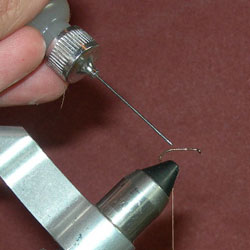 |
First step is to wind some thread onto the hook, a good idea to glue the thread and while still wet tie in the tail as this will stop the fly rotating and from sliding up and down the hook.
|
| |
2 |
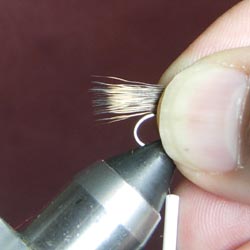 |
The Deer Hair tail needs to be stacked to get all the fibers an even length. Use the Deer Hair give the body a bit more bulk. Deer hair will flay out if you tighten up too much on the thread so it best to put you first wrap around the middle of the hook and wind back from there, as you get towards the tail start to ease up on the pressure so to reduce the flaying
|
| |
3 |
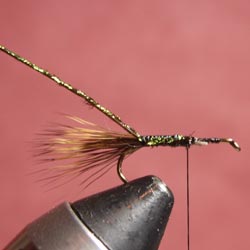 |
Tie in the Peacock Herl, it's a good idea to add some more glue to the body at this point then neatly wind the herl forward stopping half way along the body
(Additionally to make the body more durable, tying in some fine (red) wire which can be wound forward over the herl as ribbing is a good idea)
|
| |
4 |
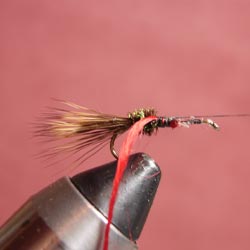 |
Next tie in the red floss and wind a few wraps forward.
|
| |
5 |
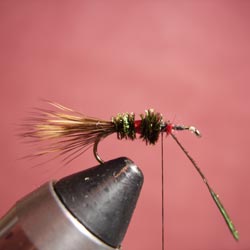 |
Then add another piece of peacock herl. I try to give the body a slight taper effect
Make sure you leave enough room to tie in the wings and hackle!!
|
| |
6 |
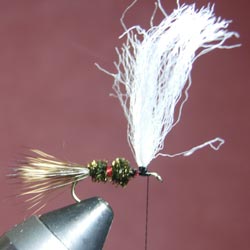 |
Calf Tail is the tradition wing material for the Royal Wulf, however for this one I've used ploy yarn. Secure it using a figure of eight. I like to wind the thread up each foot a little, helps support the wings and stops them splaying, then glue the base which will make them stronger.
|
| |
7 |
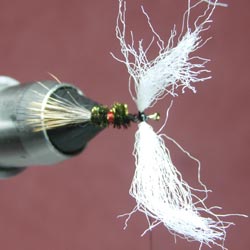 |
View from above
|
| |
8 |
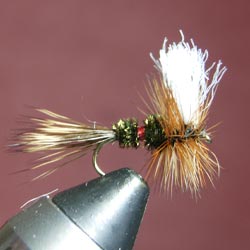 |
Then tie in you hackle starting just in front of the peacock herl, create a nice tight hackle which will help the fly float
Tie off the hackle then holding it down out of the way bring the Swiss Straw forward over top and tie that in. One little tip here is to use a sharp blade to cut off the excess instead of scissors as the blade will give a closer cut, but be careful, if you cut your thread you're in trouble!
|
|








